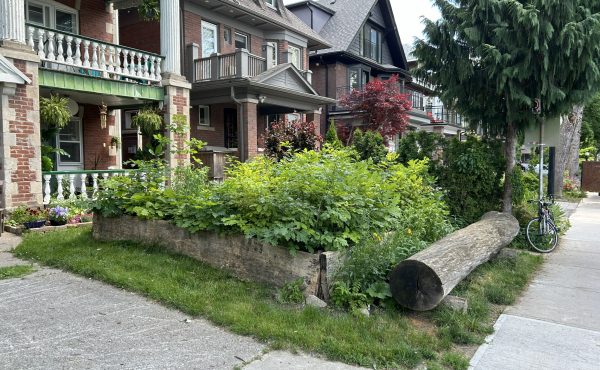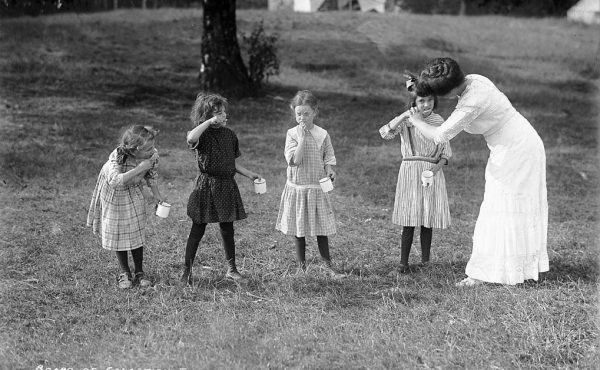

Editors Note: Spacing is pleased to be participating in the Toronto Public Library’s One Book program again this year. This month the library hopes the whole city will start reading Loyalty Management, a poetry book by Glenn Downie, set in part in the Junction neighbourhood. Throughout the month Spacing Toronto will present a series of posts exploring the book.
– – – – – – – – – – – – – – –
“Butternut.”
Messy tree says Mike
who cut his down years ago
He shows me his butternut stump
like it’s some sort of lesson
like he gnawed it down with his teeth…
fiercely sweeping our fruitfulness from his driveway— Loyalty Management. pg. 52.
I think trees and Toronto have a special connection. We’re not like Vancouver with its cherry trees that explode into pale pink every Spring; our trees are more utilitarian. Older neighborhoods like the Junction area that Downie is writing about are graced with huge tall trees that create canopies over the sidewalk every summer. Many streets of trees were planted at similar times so that whole blocks often loose their trees within the span of a few years and are replaced with fragile saplings tied to posts for support. It’s amazing how quickly the loss of trees can change a street.
Butternut trees are endangered species and the city will not remove them, but many home owners will take efforts to remove trees themselves if they perceive them as a nuisance. In the poem “Butternut,” the author draws illusions between the creation of the life of his daughter and the nuts that fall from his tree:
That fall
in our third-floor bedroom treehouse
we are planting the seed
of a daughter.
The connection between human life and nature is a common literary one and creates an image of Downie’s home as filled with life and joy. By describing his bedroom as a tree house the author makes explicit the connection between the home and the tree; in other words, the tree is part of the structure of his home and just as important as the physical house itself. Toronto is a city of neighbourhoods, but not always neighbours. The poem’s description of the disgruntled sweeper Mike seems particularly relevant this Spring, as the much publicized Ralph Scala case has come to a close. The junction resident’s malicious behavior against his neighbours lasted for seven years and seemed apropos of nothing. The conclusion of the poem is sympathetic to his neighbour, whose protests are more constrained:
A Belgian Job
afflicted by plagues & trials
he doesn’t deserve
When butternuts hit his trashcans
it sounds like it is raining stones.
The author recognizes the dual nature of the tree — while it represents home, life, and birth for him it seemingly compounds the difficulties Mike’s life has already faced and hits the neighbour’s garbage like rocks. The following is a video of the author walking through the trees in the Junction:
[youtube]http://www.youtube.com/watch?v=nyGBTqmKKIk[/youtube]
Photo by JonnyL.



